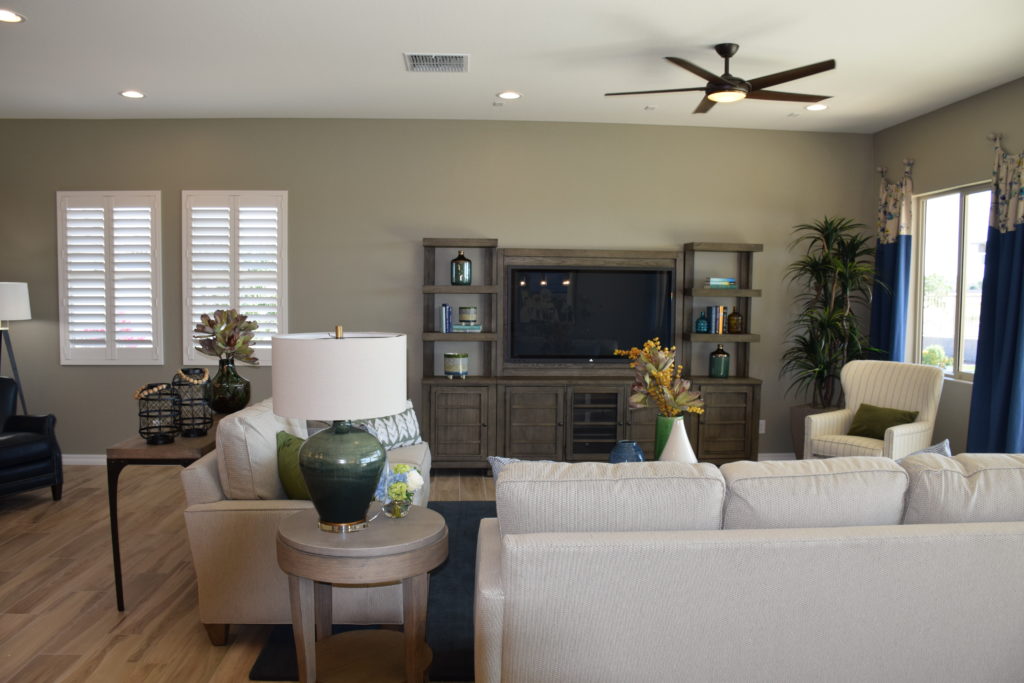
No matter what size living room you have, if you like to entertain frequently you need to give some consideration to your seating. From conversation areas to quiet reading nooks, proper seating arrangements can help make an entire room flow together beautifully.
Types of Seating Arrangements
There are several different ways you can arrange the seating in the living room of your home. The idea is to create as many different groups as you can within the space, while still leaving plenty of room to navigate the area easily.
Group seating areas are meant for three or more people to gather together. This could be a couch opposite a chair, two loveseats or couches opposite one another, or a loveseat, couch, and chair all arranged around a coffee table. Group seating areas are generally in the center of the room. If you have enough space, you can even set two group seating areas back to back in the middle of a large room.
Intimate seating areas are for two people to talk quietly together. This is usually two arm chairs and an end table. They can be placed near a window or in front of a fireplace or other area that invites conversation.
Quiet seating areas are for a single person to use at a time. This usually consists of a single arm chair, usually with a small table and/or lamp nearby. These seating areas may be tucked into corners or next to bookcases or other large or built in furnishings.
Seating Area Tips
Make your seating areas better and more suited to the room they are in with these tips.
- Use temporary seating in small spaces such as pillows and ottomans. You can stack them on the sides of the room when not in use.
- Walk through the room to all the various seating areas and make sure they are easily accessible, and that they are not blocking the path to other parts of the room.
- Try to make sure that each seating area has a table nearby, as well as plenty of light.
- Make sure that the main seating area in the room is grouped around a focal point to ensure its use.


